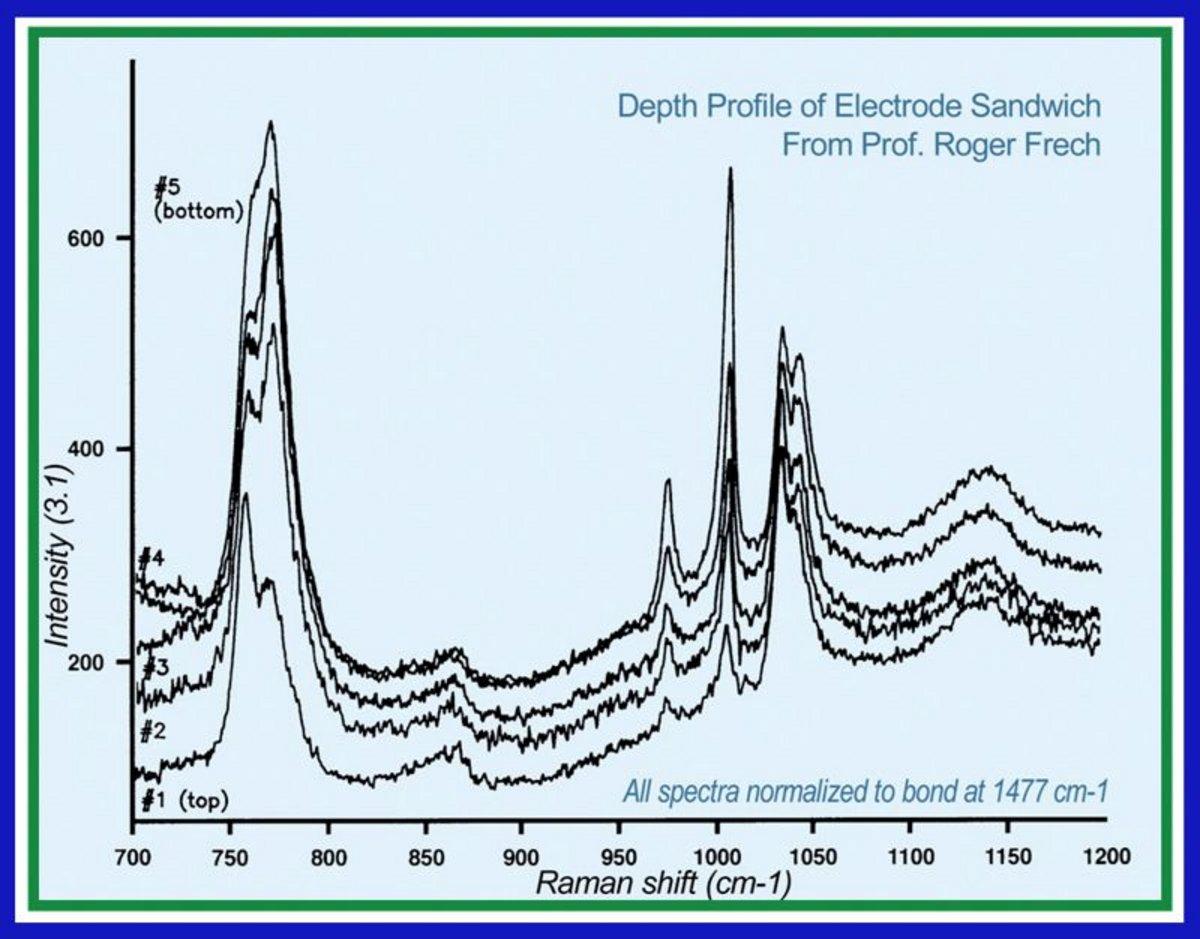

Correcting the raw spectra for the decrease in absolute intensity due to varied path length of both the laser and scattered radiation through the medium that is either absorbing or scattering. This is done by normalizing all spectra to one of the bands of the polymer matrix, specifically the one at 1477 cm-1.
The phenomenon of diffusion has been known for centuries. For example, the ancients who dyed fabrics certainly noticed the leading edge of their turquoise dye propagating through their cotton cloth, and biologists have long been aware of osmosis through various membranes. With our century’s advances in engineered materials, scientists and engineers are now able to design diffusive layers to provide controlled rates and selectivity of diffusion.
There are a number of applications of engineered diffusion in current technology. Some are medical: drug patches allowing sustained slow release of a pharmaceutical, and membranes are used in dialysis and various laboratory separation procedures. Similar to the use of drug patches is the agricultural use of slow release nodules to provide sustained fertilisation of soil. Industrial production of chemicals and foodstuffs often depend on separations with various membranes.
Other applications are of a less organic nature, as in the separation of gases by selective diffusion through membranes, and of ions through a solid, which might be part of a battery or other electronic device. Sometimes, diffusion is an undesirable phenomenon, as when we wish to store gases dissolved in a solid, and they can diffuse out over time, or when diffusion of oxygen into a semiconductor crystal can depreciate the performance of an electronic device.
In order to engineer materials with controlled diffusive properties, we need to be able to measure the diffusive process in situ. Raman microprobe spectroscopy is an ideal candidate for this type of studies.
Raman Spectroscope - Automated Imaging Microscope
Confocal Raman Microscope
Confocal Raman & High-Resolution Spectrometer
У вас есть вопросы или пожелания? Используйте эту форму, чтобы связаться с нашими специалистами.
